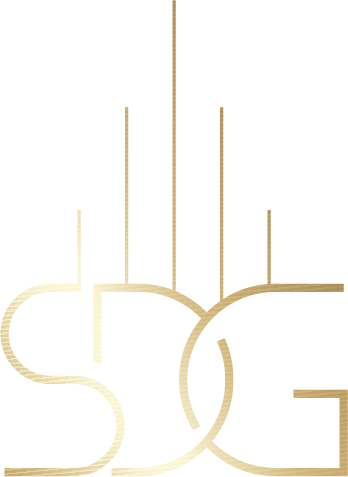How Can Space Planning Services Improve My Office?
In today’s fast-paced work environment, optimizing your office space can significantly impact productivity, employee satisfaction, and overall success. Space planning and interior design services offer tailored solutions to create an efficient, functional, and aesthetically pleasing workspace. But how exactly can these services transform your office? Let’s dive into some frequently asked questions to find out.
What are Space Planning Services?
Space planning services involve analyzing and organizing a workspace to maximize efficiency and functionality. This process often includes layout design, furniture arrangement, and the strategic placement of equipment and resources.
By evaluating your office’s current layout, space planners can identify areas that are underutilized or improperly arranged. The ultimate goal is to create a harmonious environment that supports workflow and fosters productivity.
Space planning can also encompass considerations such as lighting, acoustics, and even aesthetic elements like color schemes. All these factors come together to form a cohesive plan for a balanced and efficient workspace.
Imagine walking into an office where everything feels just right. The desks are at the perfect height, the lighting is well-balanced, and there are areas for both collaborative work and quiet concentration. This is the vision that space planning services aim to bring to life.
The plan is not just to make the office look good but to ensure it functions well for everyone who works there. Space planning services take a holistic approach, addressing both form and function to create a workspace that’s truly effective.
How Do Space Planning Services Assess Your Current Office Layout?
Professionals will conduct a thorough assessment of your current office layout to identify any inefficiencies or areas for improvement. This may involve taking measurements, evaluating workflows, and consulting with employees to understand their needs and preferences.
One crucial aspect of the assessment is the function of each area. For instance, space planners will look at whether your meeting rooms are appropriately sized and located or if your break areas are conducive to relaxation and informal conversations.
Technology also plays a significant role in modern office layouts. Space planners assess the placement of power outlets, network infrastructure, and ergonomic setups for computer workstations to ensure everything is both accessible and optimally placed.
An often overlooked aspect is the human element. Through employee surveys and interviews, space planners can gather valuable insights into what works and what doesn’t. This information is crucial for tailoring the workspace to better fit the people who use it daily.
With this detailed analysis, space planners can draft a customized plan that not only optimizes space but also aligns with your organization’s workflow and culture.
What Benefits Can You Expect from Optimized Space Utilization?
Optimized space utilization can lead to increased productivity, improved employee morale, reduced operational costs, and enhanced company image. A well-organized office fosters a more collaborative and efficient work environment.
When space is used effectively, there’s less clutter and more room for employees to move freely and work comfortably. This, in turn, reduces stress and can even boost overall job satisfaction.
Improved space utilization can also lead to cost savings. By making better use of existing space, companies may avoid the need for costly renovations or additional office space.
An organized and aesthetically pleasing office can impress clients and visitors, enhancing your company’s image and brand perception. It signals that you take your work seriously and are committed to providing a top-notch environment for your team.
A well-designed layout also promotes better communication and collaboration among employees. For instance, by clustering departments that frequently work together, you reduce the distance employees have to travel to interact, fostering quicker decision-making and idea sharing.
How Do Space Planning Services Customize Workspaces for Your Needs?
Interior Designers tailor their solutions to fit the unique needs of your business. This may include creating modular workstations, designing private meeting areas, or incorporating ergonomic furniture to cater to different working styles and job functions.
Customization starts with understanding the specific requirements of each department and job role within your organization. Whether it’s creating a quiet zone for focused work or an open area for team collaborations, the idea is to cater to the diverse needs of your workforce.
Modern offices often require a mix of spaces—some for collaborative efforts, others for concentrated individual work. Space planners use modular designs to create flexible areas that can easily be reconfigured as needs change.
Ergonomics also play a crucial role in workspace design. By incorporating adjustable chairs, sit-stand desks, and other ergonomic furniture, space planners ensure that employees remain comfortable and healthy, reducing the risk of work-related injuries.
Moreover, technology integration is seamlessly woven into the design. From smart boards in meeting rooms to charging stations for mobile devices, the goal is to create an environment that supports your business operations efficiently.
Can Improved Office Layouts Boost Employee Well-being?
Yes, a thoughtfully designed office can positively impact employee well-being. Adequate lighting, comfortable seating, and designated break areas contribute to a healthier and more satisfied workforce.
Natural light is one of the most significant factors affecting employee well-being. Offices designed to maximize natural sunlight not only reduce energy costs but also improve mood and energy levels among employees.
Comfortable seating is another critical element. Ergonomically designed chairs and desks help prevent common issues such as back pain and repetitive strain injuries, leading to happier and more productive employees.
Designated break areas where employees can relax and unwind also contribute to their overall well-being. These spaces provide a necessary respite from work, reducing stress and preventing burnout.
Additionally, incorporating plants and greenery into the office layout can improve air quality and add a touch of nature, which has been shown to boost mental well-being and productivity.
What Role Does Aesthetics Play in Office Design?
Aesthetics play a crucial role in creating an inviting and professional atmosphere. Effective space planning incorporates elements like color schemes, decor, and branding to enhance the visual appeal and cohesiveness of your office.
The choice of colors can significantly affect mood and productivity. For instance, blue is often used to create a calm and focused atmosphere, while yellow can inspire creativity and energy.
Branding elements such as logos, company colors, and mission statements integrated into the office design help reinforce your corporate identity and make a lasting impression on clients and visitors.
Thoughtfully selected decor, including art pieces, furniture, and even the layout of common areas, adds to the overall aesthetics and makes the office a more pleasant place to work.
A well-designed office aesthetic not only enhances visual appeal but also fosters a sense of pride among employees, who can feel more connected to a professionally designed workspace that reflects company values.
How Can Space Planning Services Help with Future Office Growth?
Space planners can design flexible layouts that accommodate future expansion and changes in your business needs. This foresight ensures that your office remains functional and efficient as your company grows.
One of the key strategies in planning for future growth is the use of modular and scalable design elements. Modular furniture, for instance, can be easily reconfigured or expanded as teams grow or new departments are created.
Flexible spaces, such as multipurpose rooms, can serve various functions over time, from meeting rooms to temporary workspaces, depending on your evolving needs.
Planning for technological advancements is another essential aspect. Integrating adaptable tech solutions ensures that your office can transition smoothly as new technologies become available or as your IT needs change.
Regularly reviewing and updating your space plan ensures that it continues to meet your business requirements and supports your long-term goals. This proactive approach keeps your office environment dynamic and ready for future challenges.
Enhance Your Office and Boost Productivity with Space Planning Services
Transforming your office with interior design services can lead to a more productive, efficient, and engaging work environment. By addressing the fundamental aspects of space utilization, customization, and employee well-being, these services can significantly enhance the overall functionality and appeal of your workspace. Whether you’re moving to a new location or simply looking to revamp your current setup, space planning & design services offer invaluable expertise and creative solutions to meet your unique needs.








